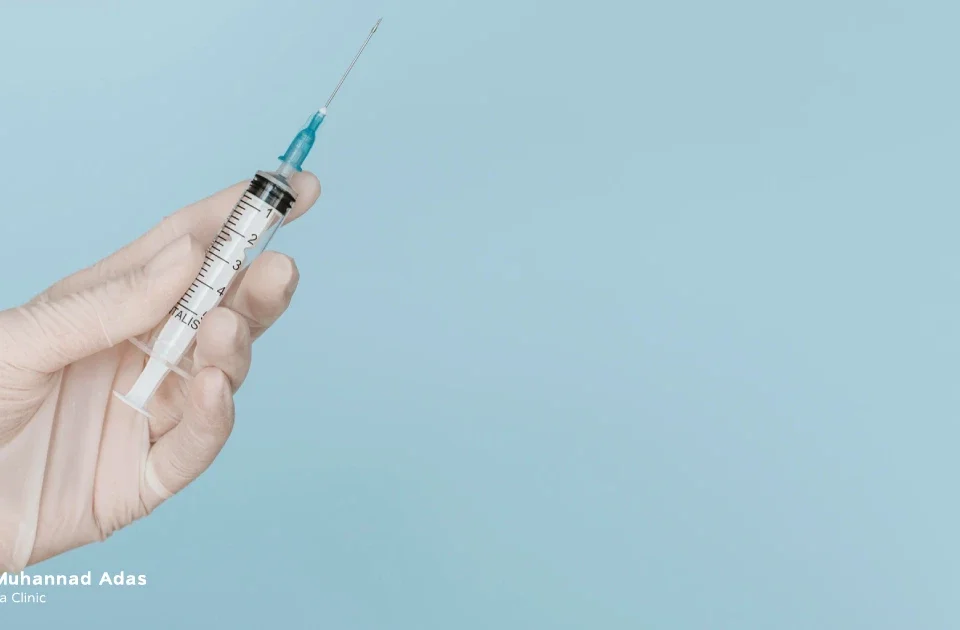Table of Contents
Some individuals may undergo constant cosmetic treatments done at different intervals and get various areas injected for optimal results. This might be a nuisance to deal with and they may not even get the desired results. If you want to achieve a completely new and refreshed youthful appearance, and enjoy your facial features as they were years pre-aging, then a surgical facelift may be the most suitable procedure for you. It is a surgical procedure and the most appropriate solution for those seeking to eliminate wrinkles in various areas and achieve long-lasting results.
It is a surgical procedure that has natural looking results with a touch of magic to your face. Even though inner beauty always shines and reflects on the outside, your physical appearance has a significant role in impacting your inner self and confidence. Facelift is the most suitable procedure to get in your 30s or 40s, where you will maintain your facial features but they will be lifted and tightened giving you a more youthful appearance. Ultimately, you will feel more beautiful on the outside and inside.
Surgical facelift
Facelift is a very popular procedure and is still hyped up till today. Its purpose is to eliminate fine facial wrinkles in the face and neck due to aging. It is often combined with a forehead lift. This surgery is considered the best technique to lift the face, the procedure involves tightening the facial muscles and underlying fatty tissue layers and lifting them. It rejuvenates the face resulting in a more youthful appearance. It is unique for its long lasting results that stay for many years.
A surgical facelift involves tightening sagging skin, smoothing fine lines between the cheeks and jawline as well as lifting the neck to reduce the fat and the lines visible there. It’s necessary to note that a facelift is not a treatment for the appearance of the skin and its quality. Other procedures, available in our clinic, can address these specific issues.
Types of surgical facelifts
Mini facelift
This type of surgery is suitable for patients with mild/moderate sagging skin and early aging signs (wrinkles & fine lines) seeking to eliminate them. The skin tissues are tightened by creating small incisions in one of these areas; the hairline, above the ear or around the ear. Through these incisions, the deep skin tissues around the cheeks and jawline are tightened and lifted resulting in a more youthful skin and rejuvenated appearance.
This surgery can be performed at the early stages of aging and when wrinkles initially appear, and it is considered the most suitable alternative for more invasive and advanced surgeries. It can be performed under local or general anesthesia.
Traditional facelift
For individuals with significant sagging skin and visible aging signs on the face and neck, this surgery is suitable as it is more comprehensive than a mini facelift with better results. However, it has a longer recovery time due to the relatively longer incisions created behind the hairline and around the ear, to reposition the underlying skin tissues and remove the excess of them.
Mid-facelift
This procedure focuses on the middle portion of the face such as the cheeks and around the eyes. Deeper incisions are created compared to the ones in a traditional facelift since it targets the underlying facial muscles allowing for more precise adjustments.
Fat grafting or fat transfer may also be performed for a better definition and contouring of the facial features. A mid-facelift is suitable for patients seeking to rejuvenate their appearance but it doesn’t completely eliminate all signs of aging.
Lower Facelift
Surgical facelifts vary depending on the targeted area, in a lower facelift, the corners of the mouth, the area around the nose & mouth and jawline are targeted. It is appropriate for patients of various ages aiming to eliminate aging signs and the resulting sagging skin.
Forehead lift
A popular procedure among men & women, it targets the forehead area where many wrinkles appear. The surgeon will tighten the area in various way such as:
- Chemical forehead lift.
- Endoscopic forehead lift.
- Thread lift.
This surgery is suitable for those suffering from long wrinkles that appear between the eyebrows or form on the forehead in a horizontal manner or uneven eyebrows. In addition, it is also suitable for those who have formed wrinkles as a result of aging and not those appearing from external factors such as lying down or sleeping on your face.
Thread lift
This procedure is a non-surgical alternative to previous facelifts. Small incisions are created under the skin to lift and tighten the facial muscles. The treatment typically takes around one to two hours. It is suitable for those seeking minor adjustments to their appearance, especially for patients of the ages 30 to 40 and older.
Thread lifts can be performed without anesthesia and provide several advantages compared to other procedures, such as allowing the patients to be awake during the procedure and help them offer guidance to the surgeon on their desired results. Additionally, it is one of the procedures that does not leave scars hence the use of specialized threads.
Instructions before the facelift surgery
All types of facelift share similar instructions and guidelines such as:
- Avoid food consumption for 8 hours pre operation.
- Avoid all types of smoking and alcohol for at least a month pre surgery.
- Avoid anything that creates skin punctures, tattoos or tanning.
- Avoid any other surgical procedures before the facelift, women should also inform their doctor about their menstrual cycle to help schedule the surgery at the most suitable time.
- Consult your doctor about any medications or supplements you’re taking, especially ones that cause blood thinning, and when is the suitable time to stop taking them.
It is crucial to consult your doctor about the pre-surgery instructions, as there are important guidelines to follow a month or more before the operation.
Complications of Facelift Surgery
Complications of facelift surgery usually do not exceed 2% of cases, according to many studies, some of them include:
- Anesthesia complications:
- Bleeding.
- Bacterial infections.
- Temporary or permanent hair loss, which may happen in areas near the incisions.
- Swelling, puffiness and fluid accumulation in the face.
- Surgical scars may form in hidden areas such as under the hairline and around the ear.
- Blood accumulation under the skin (Hematoma). Men are at a higher risk (7-9%) compared to women (1-3%). The risk increases with high blood pressure or the use of blood thinners.
- Nerve damage which is very rare.
As we previously mentioned, complications rarely happen but it is important to constantly contact the doctor and get an immediate consultation if any of these symptoms appear:
Symptoms that require immediate doctor consultation
- Severe pain in the face or the neck post operation.
- Chest pain.
- Irregular heartbeats.
10 Advices & instructions after the facelift surgery
After getting facelift, it is essential to follow the instructions provided by the doctor, in addition to the following instructions:
- Keep your head elevated when lying down, be sure to avoid strain, for the first one to two weeks.
- Adhere strictly to your doctor’s prescribed medication schedule. Especially before feeling discomfort to avoid pain.
- Apply cold compresses to the face.
- It is very important to rest, and it is best to have an accompanying adult to take care of you and ensure you are taking your scheduled medications.
- Avoid certain activities for 7 to 10 days to ensure optimal rest.
- When lying down for a long period of time, It is necessary to be in a sitting position for a minute before standing to avoid dizziness or fainting.
- Avoid anything that could cause trauma to your face, neck, or head the first period after the surgery.
- Avoid excessive sunlight exposure for a month.
- Consume a healthy diet rich in proteins & fluids, to avoid incidence of nausea and vomiting due to fluid loss.
- You can wash your hair the first day after the surgery or the day after. Use a gentle baby shampoo on the skin and be gentle when dealing with your hair & face.
5 FAQs regarding facelift
How long does the surgery last?
Around one to two hours.
How long does swelling last after the operation?
Swelling lasts from one to several weeks post operation with swelling at its peak in the first week.
When do the results appear?
Recovery time may last from one to four months and it may take up to a year to see visible results.
How long do the results last?
Results may last from ten to fifteen years. It is essential to maintain a skincare routine as well following all the instructions provided by the doctor.
Is facelift surgery difficult?
Facelift is considered as difficult as any other surgical procedure. It works by tightening the face, skin and sagging tissues to achieve a new look.






